The perfectionist's Garden of Eden: plant geometry
Categories: Nature | Science | World
By Pictolic https://pictolic.com/article/the-perfectionist39s-garden-of-eden-plant-geometry.htmlSometimes it seems that plants grow randomly, in a random sequence. But the truth is that the endings of each branch, leaf, stem, bud or petal are consistent with certain laws. There are patterns and patterns in nature everywhere you look, the most consistent of which is the Fibonacci sequence.
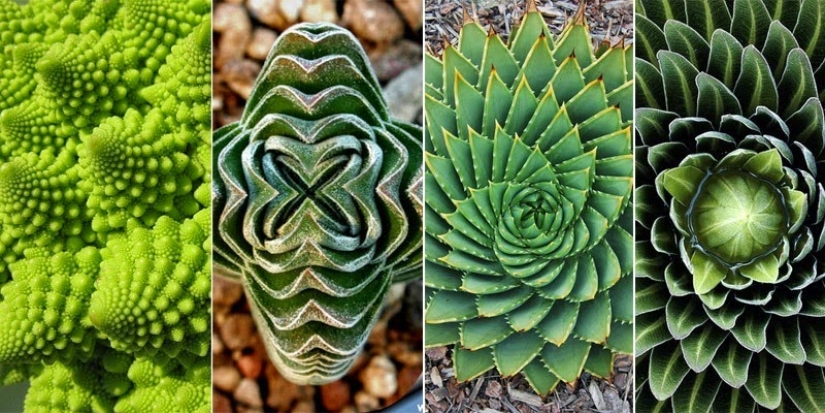
Fibonacci numbers were first described by ancient Indian mathematicians hundreds of years BC, although they were named after the Italian mathematician Leonardo of Pisa, better known as Fibonacci.
The Fibonacci sequence is incredibly simple: each subsequent number is the sum of the previous two, i.e. the sequence looks like 1, 1, 2, 3, 5, 8, 13, 21... and so on ad infinitum. By the way, Fibonacci numbers can be found in nature almost anywhere. For example, the arrangement of leaves along the stem follows the Fibonacci sequence so that each leaf has maximum access to sunlight and moisture. The structure of pine cones, sunflowers, pineapples and cacti works on the same principle.
You may have heard of the golden ratio, which is another form of the Fibonacci sequence in nature. And all plants have their own geometry in one way or another. However, some have more obvious and striking geometry than others. And here are just some examples.
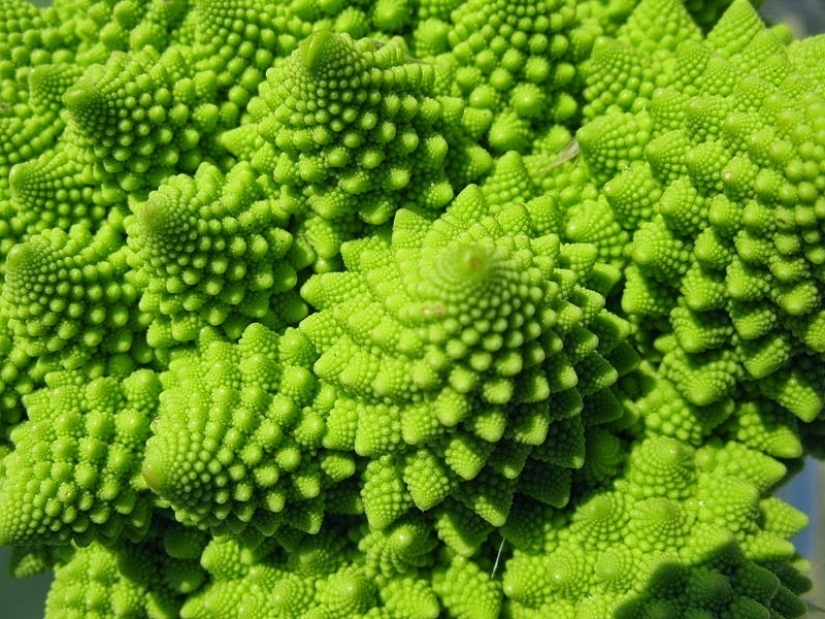
Romanesco is distinguished by its light green color and unforgettable appearance, resembling a fractal in its shape. Compared to regular cauliflower, the texture of Romanesco as a vegetable is not as crunchy and the flavor is not as distinctive, rather subtle and nutty.
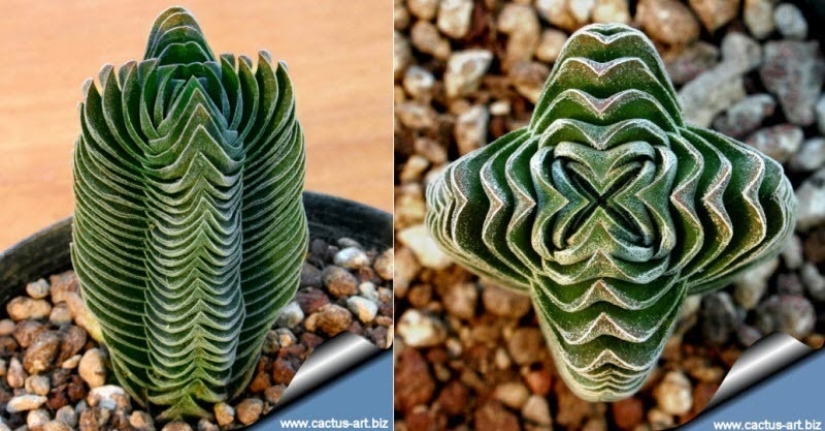
This is a hybrid between the Crassula falcata and Crassula pyramidalis species, bred in 1959 by Miron Kimnakh from the USA. But since this representative of the flora grows very slowly, it has never been widely advertised. So even 50 years after its creation, the "Buddhist Temple" is still difficult to find. The plant reaches almost 15 cm in height and begins to open at different levels on the sides of each column. The flat, thin leaves are silvery-gray or greyish-green, closely spaced and curled up at the edges to form a perfectly square column.
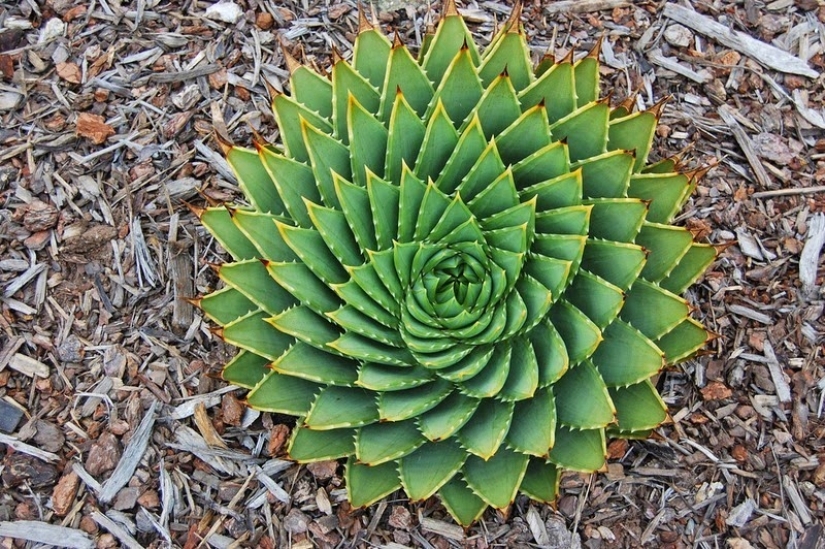
Aloe polyphylla grows high on the grassy slopes of the Drakensberg Mountains in the Kingdom of Lesotho, near South Africa. Here it clings to rocky cracks and well-dried slopes. This area has a fairly cool climate in summer, and in winter the aloe is often covered with deep snow. Its symmetrical spiral shape has made it a coveted plant for collectors, but it is difficult to cultivate and usually dies if removed from its homeland. In South Africa it is a crime to purchase or collect this plant.
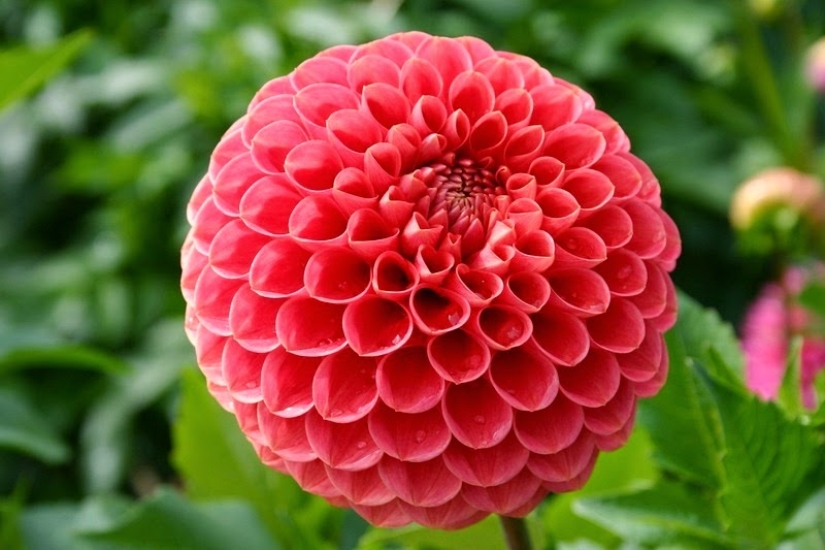
The dahlia is a common garden flower, but have you taken a closer look at it? There are 42 species of dahlias, and their leaves can reach from 5 to 30 cm.
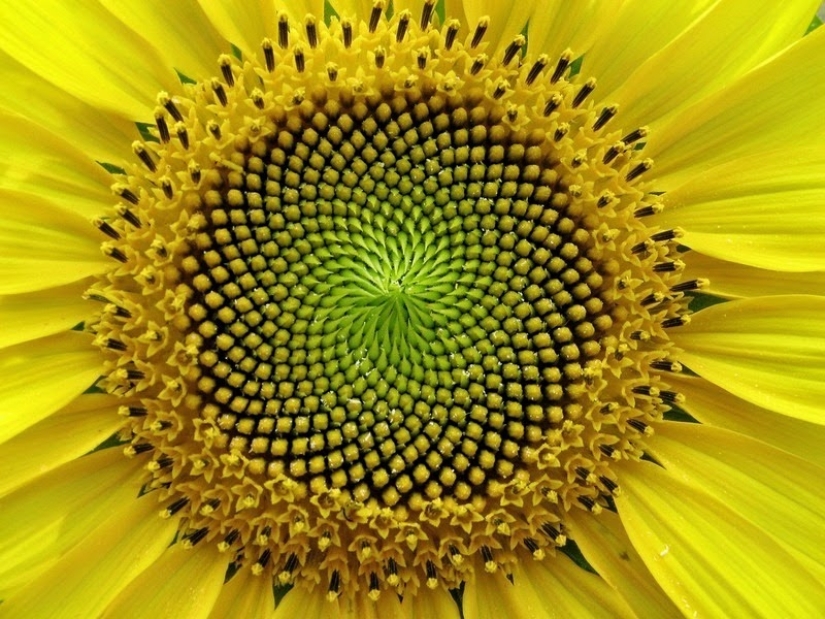
The seed cap of a sunflower follows Fermat's spiral, which is based on the Fibonacci sequence.
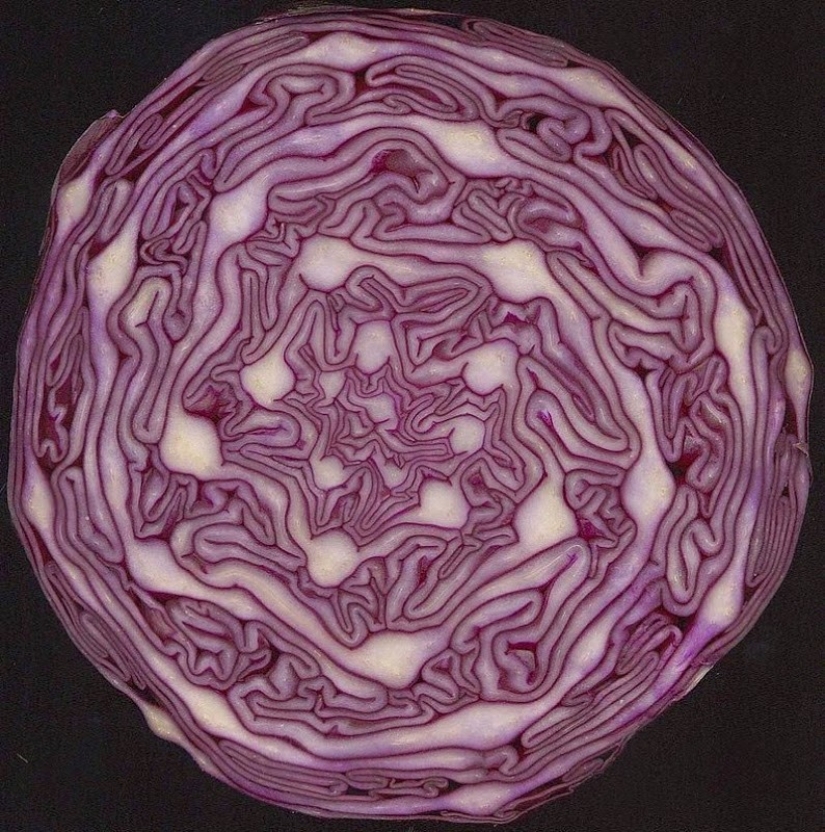
If you cut red cabbage in half horizontally, you will see Fibonacci spirals in the arrangement of the leaves.
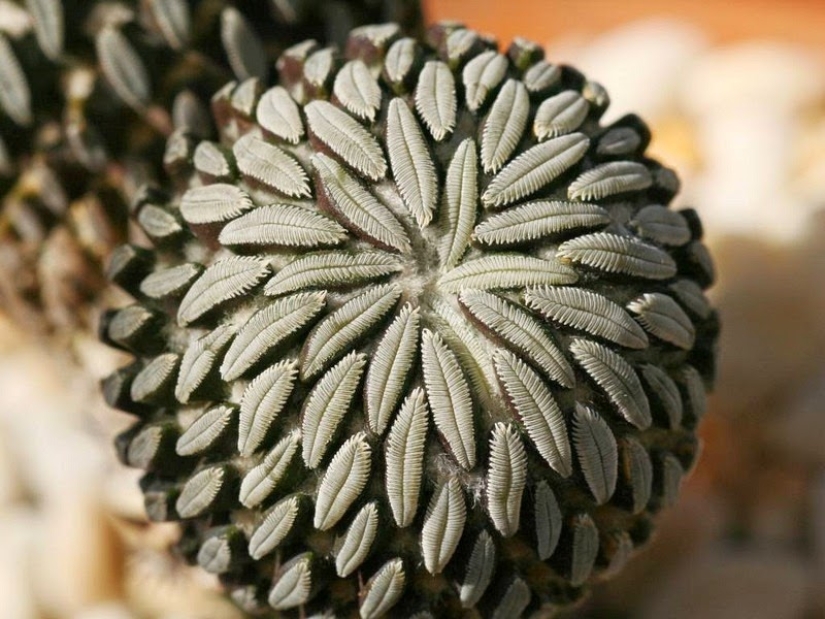
Pelecyphora loucaceae is gray-green in color and round in shape with flattened nodules that are distinguished by scaly vertebrae and arranged in a spiral shape. It can grow up to 10 cm in height, and its bright purple flowers reach a width of 3 cm. This plant is relatively rare and can only be found in Northern Mexico.
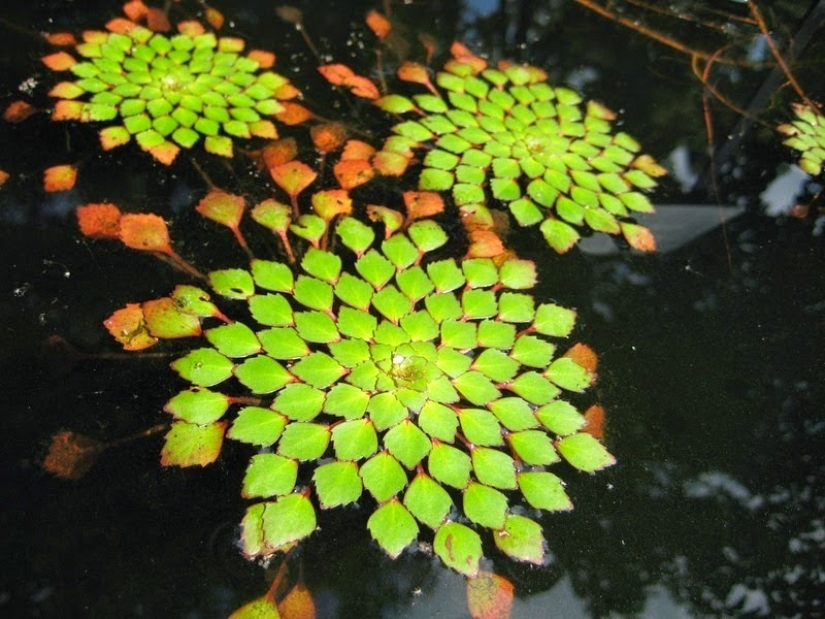
Ludwigia sedioides, also known as the Mosaic Flower, is a perennial herbaceous plant that grows only in the swamps of Brazil and Venezuela.

Lobelia deckenii is a species of giant lobelia that grows in the mountains of East Africa. This plant usually produces numerous rosettes. They are usually connected underground. Each rosette grows for several decades, produces one large inflorescence and hundreds of thousands of seeds, and then dies.
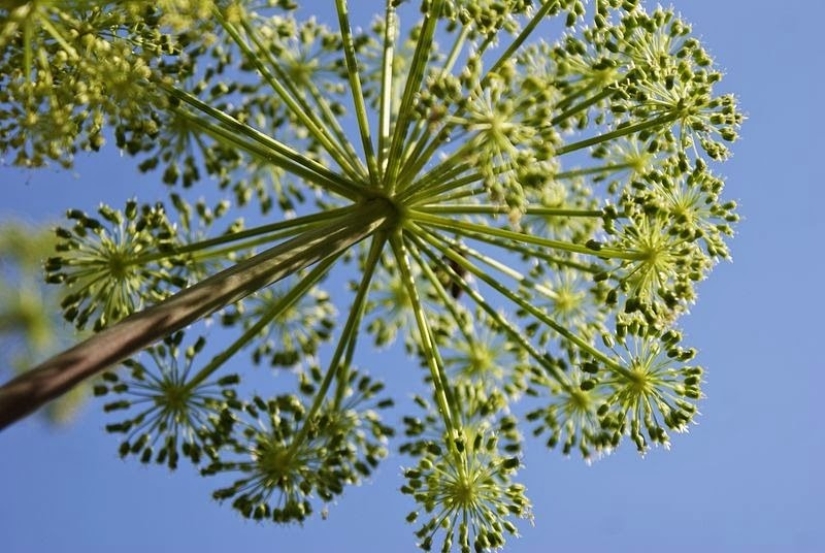
The flower head of angelica is round in shape. Each part is similar to the whole head in that it has a stem and its own circle of flowers. Angelica is a genus that includes about 60 species of tall biennial and perennial plants of the Apiaceae family. It grows in temperate and subpolar regions of the Northern Hemisphere, reaching as far as Iceland and Lapland. It grows up to 1-3 m tall, has large bipinnate leaves and large compound umbels of white or greenish-white flowers.
Recent articles

Most of us think that the color of the eggshell does not play any role and it is possible not to pay attention. But it's not and ...

The more we rely on technology, the more potential power hackers gain over us. It doesn't matter if their goal is to help or cause ...

Creating a good portrait is one of the most difficult tasks for any photographer. In order to make a really natural and memorable ...